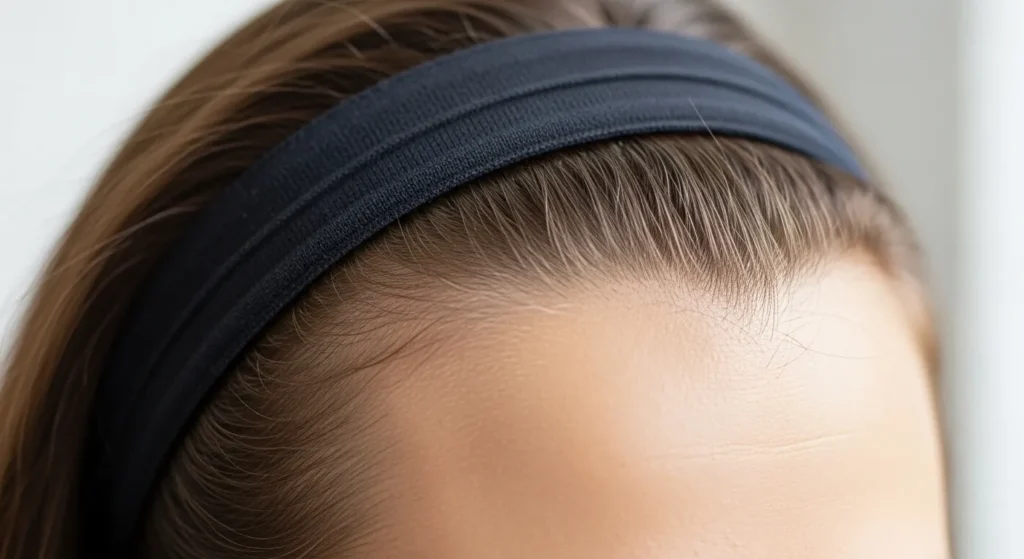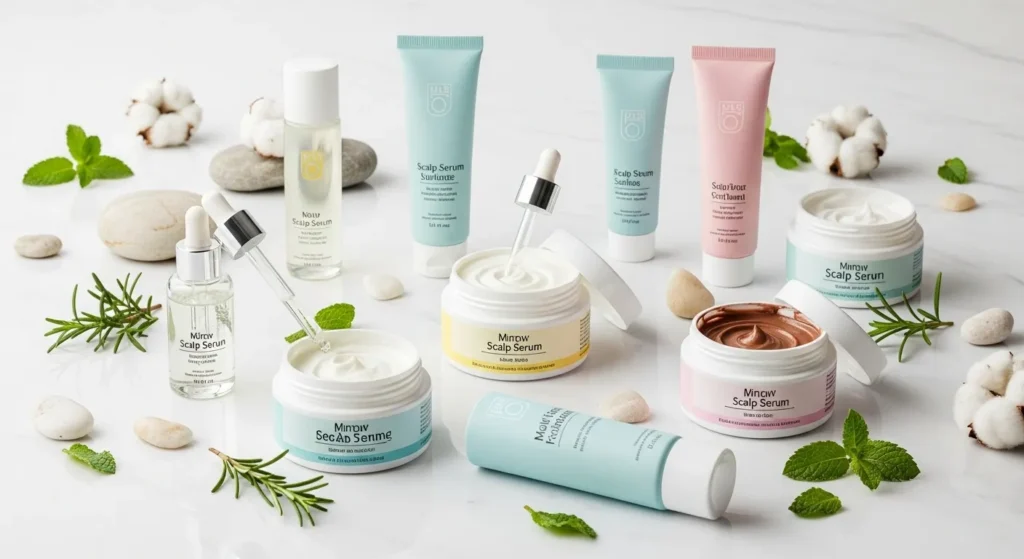Worried that your go-to headband might be harming your hairline? You’re not alone. Many people ask, Do headbands cause hair loss and the answer depends on how, how often, and what kind of headband you use.
This article explains when headbands can lead to hair damage, how to avoid it, and expert-backed tips to keep your scalp and strands healthy. Whether you’re active, stylish, or both, we’ll help you wear headbands confidently without risking your hair.
Can Wearing Headbands Cause Hair Loss?

Headbands themselves aren’t inherently harmful, but the way you wear them can contribute to hair loss over time. This typically falls under a condition called traction alopecia, which results from repeated tension on hair follicles.
Traction Alopecia and Tight Hairstyles
Wearing a tight headband regularly pulls on the hair at the front and sides of your scalp. Over time, this repeated strain weakens the follicles, potentially causing thinning or permanent hair loss along the hairline.
Friction and Hair Shaft Damage
Headbands made from rough or low-quality materials can rub against your hair, leading to mechanical damage. This friction weakens the hair shaft, causing split ends, breakage, or frizz.
Materials and Sweat Build-Up Impacting Scalp Health
Synthetic or non-breathable fabrics can trap sweat and oil against your scalp, especially during workouts. This creates a moist, bacteria-friendly environment, which may lead to inflammation, scalp irritation, or even fungal infections that disrupt healthy hair growth.
When Does a Headband Become a Problem for Hair?
Not all headbands are problematic, but several risk factors increase the likelihood of hair damage.
How Tight Is Too Tight?
If a headband leaves an indent on your skin or causes discomfort, it’s likely too tight. Continuous pressure leads to reduced blood flow and mechanical stress on the follicles.
Duration and Frequency of Use
Wearing a tight headband all day, every day, gives your scalp no time to recover. The more prolonged the pressure, the higher the risk of gradual thinning or breakage.
Impact on Different Hair Types
- Curly or coily hair tends to be more fragile and susceptible to breakage from tight accessories.
- Fine or thin hair may show signs of traction sooner due to less density.
- Thicker hair has more resilience but is still at risk if pulled excessively.
What the Science Says: Is Hair Loss from Headbands Permanent?
Reversible vs. Permanent Damage
Early-stage traction alopecia is reversible if the source of tension is removed and the scalp is cared for properly. However, chronic tension can permanently damage the follicles, leading to irreversible bald patches.
Recovery Timeline with Examples
- Mild cases: Hair regrowth may start within 2–3 months of stopping tight accessory use.
- Moderate cases: May require 6+ months of scalp care, growth stimulants (like minoxidil), and professional monitoring.
- Severe cases: Permanent damage may require hair transplant surgery to restore density.
How to Wear Headbands Without Damaging Your Hair
Wearing headbands safely is entirely possible—if you follow some smart habits.
Choose the Right Material
Opt for soft, breathable, and non-abrasive materials like:
- Satin
- Silk
- Soft cotton blends
Avoid plastic or rough elastic bands that tug or rub.
Proper Fitting and Positioning
- Ensure the headband isn’t too tight or pressing deeply into your scalp.
- Avoid placing it directly on fragile hairlines; try pushing it slightly back over the crown instead.
- Rotate your styles to distribute tension evenly.
Give Your Hair a Break
- Avoid wearing headbands daily or for extended hours.
- Let your scalp rest between uses.
- Moisturize and massage the hairline to stimulate blood flow and relieve tension.
Other Common Accessories That May Cause Hair Loss
Headbands aren’t the only culprits. Several everyday accessories can also contribute to accessory-induced hair damage.
Caps, Helmets, Scarves, and Clips
- Caps and helmets can trap sweat and rub against the scalp.
- Scarves made of synthetic materials may cause friction.
- Clips and pins create pinpoint pressure on certain areas, especially when used repetitively.
Comparing Their Effects with Headbands
Headbands create continuous pressure along the hairline, while accessories like clips cause localized tension. The key risk with all these items is chronic use and improper fitting.
Who’s Most at Risk? Hair Loss and Headbands in Different Populations
Athletes and Active Individuals
Sweaty workouts, tight gear, and prolonged wear put athletes at higher risk of friction-related and traction-based hair issues.
Children and Teenagers
Young scalps are more sensitive. Regular use of tight headbands during school or sports can create early-onset hair thinning.
Postpartum Women or Those with Weak Follicles
Hair is already fragile due to hormonal changes. Adding external tension can worsen temporary postpartum hair shedding.
Recommended Products or Habits
- Wide, padded headbands with breathable lining
- Scalp serums containing niacinamide or caffeine for follicle stimulation
- Hair masks to strengthen hair shaft integrity

When to Seek Medical Help
Consult a trichologist or hair restoration specialist if you notice:
- Persistent thinning at the hairline
- Bald patches forming
- No improvement after adjusting your hair habits
Frequently Asked Questions (FAQs)
Can headbands cause receding hairlines?
Yes, especially if worn too tightly or frequently. This can result in traction alopecia over time.
Are fabric headbands better for preventing hair damage?
Absolutely. Satin, silk, and cotton are gentler on hair compared to synthetic or plastic options.
How long should I wear a headband per day?
Limit usage to a few hours and avoid wearing them every day to prevent prolonged pressure on follicles.
Is hair loss from headbands permanent?
In the early stages, it’s reversible. But chronic use leading to follicle damage can cause permanent hair loss.
Can headbands worsen existing hair loss?
Yes, especially in individuals already experiencing thinning or conditions like telogen effluvium or alopecia areata.
Final Thoughts: Should You Stop Wearing Headbands?
Headbands can be safe to wear if used mindfully. Avoid excessive tension, choose gentle materials, and give your scalp recovery time. If you’re noticing changes in your hairline or texture, it’s worth reconsidering your accessory habits and seeking professional advice.
If you’re worried that headbands or other styling habits are contributing to hair thinning, it’s time to act. Book a consultation with Dr. Rana Irfan, ABHRS-certified hair restoration surgeon in Islamabad, for a comprehensive scalp analysis and customized treatment plan.
